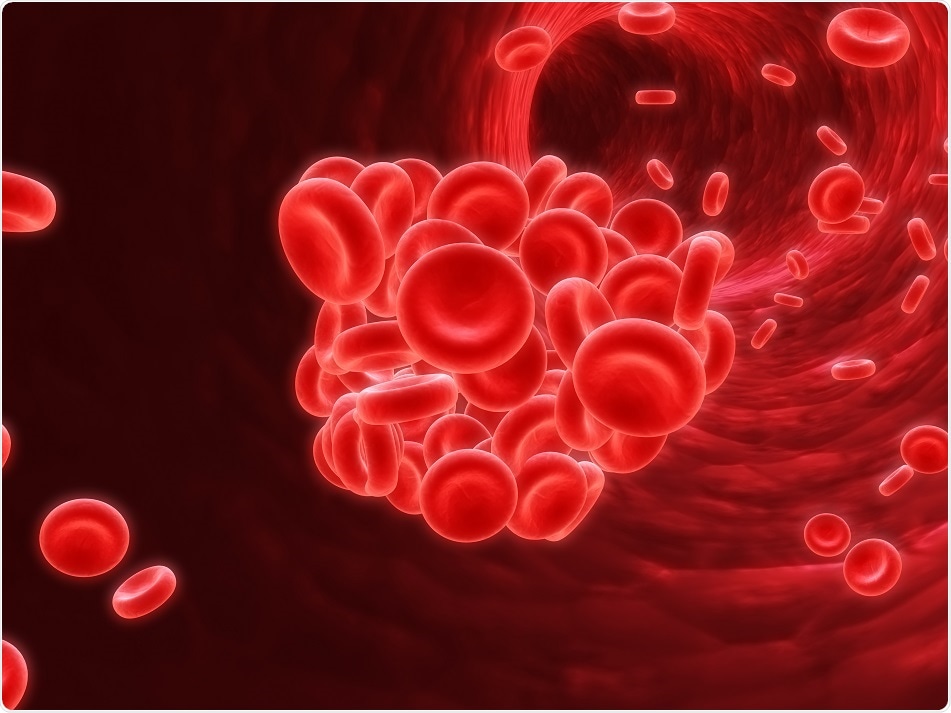Dec 8 2017
A new study conducted in the Children's Hospital Of Philadelphia (CHOP) reported positive results in a phase 1/2 clinical trial for the inherited bleeding disorder hemophilia B.
 Credit: Sebastian Kaulitzki/ Shutterstock.com
Credit: Sebastian Kaulitzki/ Shutterstock.com
A single blood vessel infusion of a novel bio-engineered gene therapy treatment allowed the adult participants safely produce sustained levels of clotting factor that avoided debilitating bleeding episodes. Participants were able to end the prophylactic treatments, a fusion gene therapy that eliminated their need for intravenous infusions of artificial clotting factor.
Lindsey A. George, MD, a lead investigator and hematologist at the Children's Hospital of Philadelphia (CHOP) stated that the one-time therapy was sufficient to prevent bleeding without any medical interventions for hemophilia patients. A set of 10 patients safely experienced and sustained clinical benefit after one successful infusion, he added.
The research team published their findings in the New England Journal of Medicine. Previously, they had reported preliminary reports from the trial at the comprehensive session of the American Society of Hematology annual meeting.
George is a member of CHOP's Division of Hematology and of the Raymond G. Perelman Center for Cellular and Molecular Therapeutics, which is a part of CHOP's Roberts Collaborative for Genetics and Individualized Medicine.
Katherine High, MD, a gene therapy pioneer, the study's senior author, president and head of Research and Development at Spark Therapeutics included 10 adult male participants in the phase 1/2 clinical session.
People who live with hemophilia face a lifelong need for vigilant monitoring and recurrent factor concentrate infusions to prevent spontaneous, potentially life-threatening bleeds and to protect their joints,"
Katherine High, Spark Therapeutics
"The discipline required to execute the usual prophylactic regimen can exact a heavy toll on quality of life that most people take for granted, and those regimens result in significant costs to patients, families and the health care system."
The team used a naturally occurring clotting factor that works 8- to 10-fold stronger than the normal factor. It was named the “Factor IX-Padua (FIX-Padua),” and was discovered in 2009 by a scientific team that included Valder R. Arruda co-author of the study, MD, PhD, at CHOP.
The team used an adeno-associated viral vector in the study to deliver the bioengineered payload of the gene that codes for FIX-Padua. Participants in the trial safely expressed that protein.
Participants with hemophilia have an inherited gene mutation that impairs them from producing the usual blood clotting factor, resulting in life-threatening or disabled bleeding, due to trauma.
Hemophilia B is a disease with low levels of clotting factor IX (FIX), which for more than two decades has been utilized to develop the gene therapy research. The actual strategy is to bring out a corrective gene in the participants by expressing the therapeutic levels of the developed blood clotting factor.
The experiments for hemophilia on animal models turned out to be successful, but in human trials the results were frustrating, as the immune response was defeated by sustained expression of FIX.
By taking advantage of FIX-Padua's attributes, the current research team aimed to attain clinical benefits by using the lowest dosage, as the higher doses of vector used previously stimulated a limiting immune response.
Participants maintained the factors levels of 33%, which is more than enough to reduce the severity of the disease and hardly eliminates bleeding. This condition aids them to avoid painful and disabling joint bleeds that occur in traditional treatments that utilize a regular dosage of blood clotting factor. The clinical benefits were maintained for 78 weeks of regular follow-ups.
After vector fusion effect, 8 out of the 10 did not require any external doses, 9 out of 10 participants experienced no bleeds, and none of the 10 participants had serious adverse effects due to gene therapy.
Only 1 participant among 10 had administered the factor previously due to baseline joint damage. But on the whole, nearly 91% of the patients used fewer factors than before the treatment.
George stated that they were looking forward to continuing the evolution of this therapy in a Phase 3 trial. “I am optimistic, this study is just the beginning of a true paradigm shift in the treatment of hemophilia" he added.
Source: